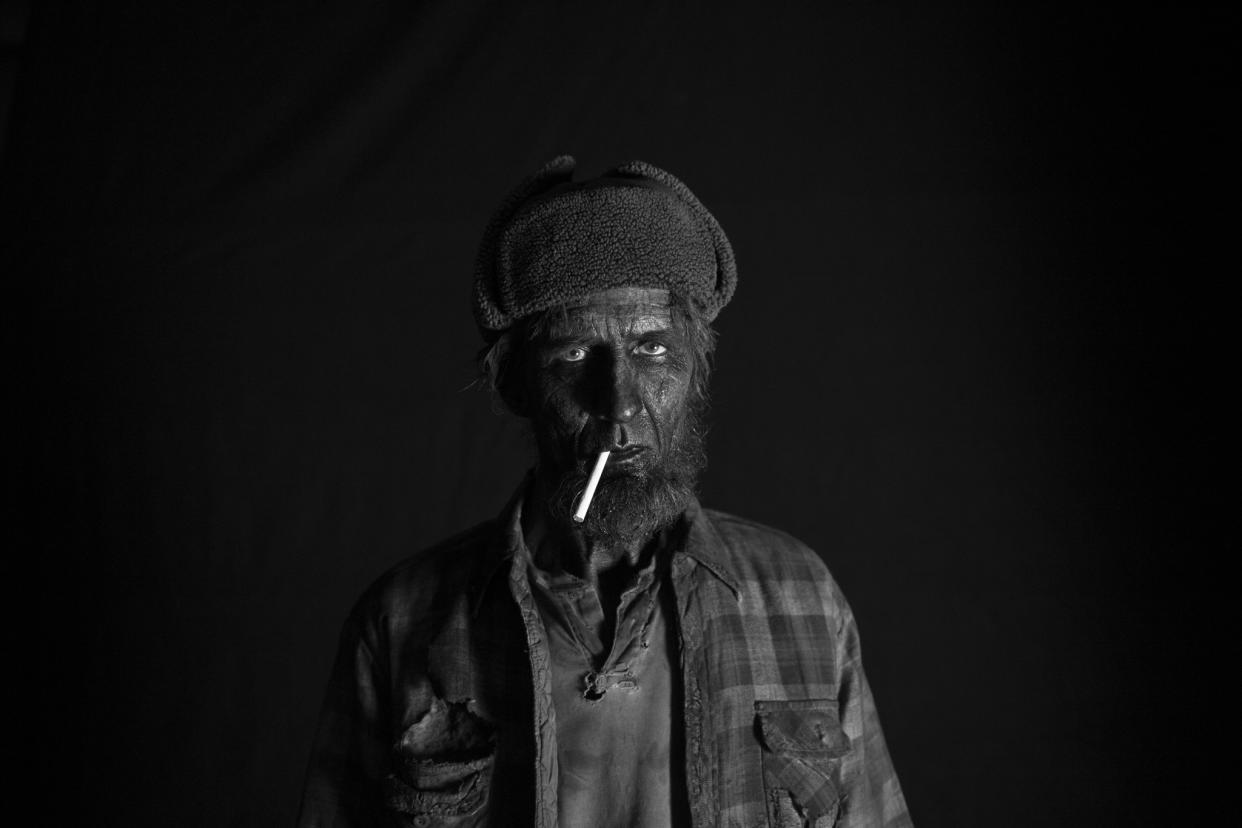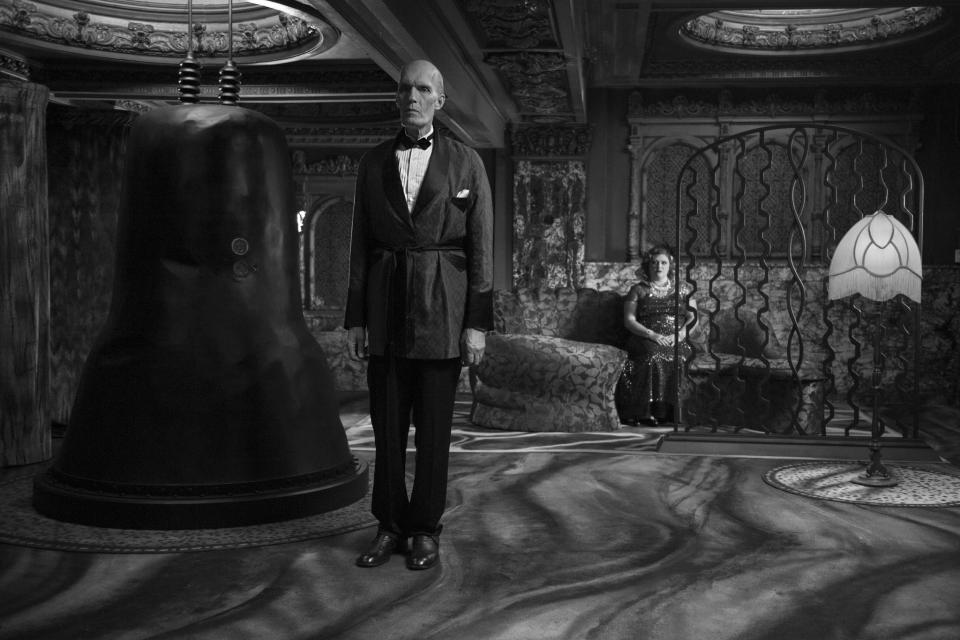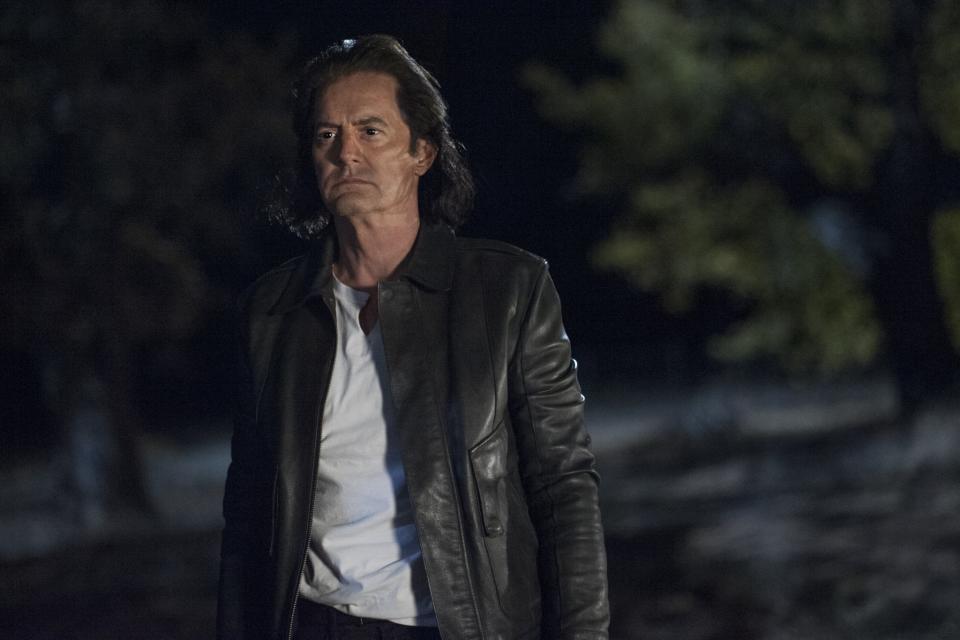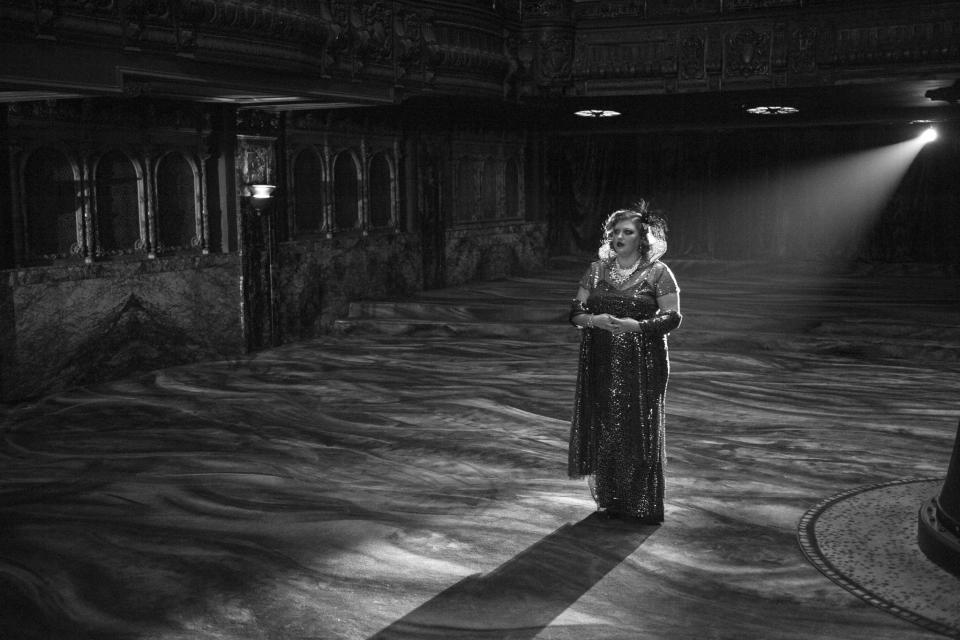‘Twin Peaks’ Part 8 Recap: The Big Bang and the Origin of Evil

Warning: This recap for ‘Part 8’ of Twin Peaks contains spoilers.
During Showtime’s panel at the TCA press tour, network president and CEO David Nevins described the new series of Twin Peaks as “the pure heroin version of David Lynch.” If there was any confusion about what he meant, I think we now have the answer; it was this episode. An hour of uncompromising, bewildering, nightmare-inducing Lynchian imagery and sound straight from the depths of hell. An episode that makes The Arm-Tree and Part 3’s space box antics seem rather vanilla in hindsight. Sixty minutes of cinematic brain-bending that probably made the Showtime execs regret folding to Lynch’s demands and had them wishing they’d hired Michael Bay to direct instead. Wow, BOB, wow!
How do you even recap an episode like that? I’ve spent the last half an hour asking myself that question as I brush pieces of my brain from the floor like a Roadhouse peanut-shell sweeper. When I put myself forward to recap the new Twin Peaks, I knew it would be a fun yet challenging endeavor. It’s not a show that follows the familiar structure and storytelling patterns of Prestige TV; Twin Peaks proudly defies recap culture, and that’s one of the reasons it’s so thrilling to watch. I knew that going in, but I was prepared for it and ready to take on anything Lynch and Mark Frost threw my way.

However, even knowing this series was going to be unconventional, and that Lynch’s work as a director has only grown more impenetrable in the years since the original (The Straight Story is the exception), nothing could prepare me for the visual violation which was Part 8. There was no Twin Peaks the town, no adventures of Dougie Jones, not even the now warm familiarity of the Red Room offered reprieve. So when it comes to the question “how do you recap an episode like that?” To put it simply — you don’t. At least not in the usual way. Not only is it an almost impossible task but it would be a disservice to the work of Lynch-Frost to try and break this down beat-by-beat like it was an episode of [insert literally any other TV show here].

If last week’s plot-heavy Part 7 brought lapsed fans back on board, then Part 8 is bound to have booted them right back into the plane of non-existence where they’re unlikely ever to return. It was almost as if Mark Frost said to Lynch, “Let me handle Part 7, I’ll get everyone up to speed storywise and then you can do whatever you want in Part 8.” “Okay, old friend,” Lynch probably said, as he gleefully skipped to his workshop, coffee in hand, cigarette dangling from his lips, and proceeded to empty out every tool in his toolbox.
In a recent interview with Russian media, Kyle MacLachlan talked about how Lynch would spend days working in secret on design elements of the show. “[Lynch] did something, I cannot tell because it will just be in the next episode [Part 8]. But he worked on something for one of the characters,” MacLachlan said, “and for a few days, no one knew what he was doing — until finally he gave up and told us what it was and what it was for. And we then thought: ‘Ah, well, now it’s clear.'” I’m not sure how anything we saw in Part 8 was clear, but if MacLachlan gets it, then I can find some comfort in that thought.
That’s one of the misconceptions about David Lynch fans; people think we’re pretentious because we “pretend” to understand what is happening while everyone else is simply too dense to “get it.” But that’s not the case, at least not in my experience. It’s not that we “get it” and others don’t, it’s that we’re okay with NOT getting it. It’s valid to find episodes like this frustrating and confusing and displeasing just as it’s acceptable to find them breathtaking and enchanting and beautiful. Neither opinion requires the viewer to “get it,” we’re all swimming in the same purple ocean of perplexity, and you shouldn’t be made to feel guilty for wanting to dive deeper nor should you be ashamed to beg for a life vest.

As a Lynch fan first, Twin Peaks fan second, I was in my element, transfixed by what was unfolding on screen. The best way to describe what happened is to say it was a surreal Twin Peaks origin story; imagine if Charles Darwin had joined the occult before he wrote On the Origin of the Species. Or if Lynch had directed The Tree of Life and 2001: A Space Odyssey and decided to stitch them together into some sort of demented conjoined twin — that would probably come close to resembling this wild episode.
Beginning with Evil Coop (Kyle MacLachlan) being shot dead by double-crossing sidekick Ray (George Griffith), we’re immediately jolted into the unexpected, and things only get more screwy from that point. A group of ghostly charcoal-covered spirits perform a tribal dance around Evil Coop’s body before disemboweling him and removing what looks to be a large BOB-faced tumor. The ritual is briefly interrupted by “the” Nine Inch Nails — the musical embodiment of Lynch’s mind — who perform an electrifying rendition of “She’s Gone Away” at The Roadhouse (the Bang Bang Bar booking agent is killing it!). Through the power of charred lumberjacks and Trent Reznor, Evil Coop is ressurected. And then things start to get weird!
David Lynch’s big bang is rooted, somewhat, in reality, specifically, the first detonation of a nuclear weapon conducted on July 16, 1945, in the White Sands desert of New Mexico (known historically as the Trinity test). There’s a stunning shot of the mushroom cloud slowly rising, like a gray flower blooming, a gorgeous armageddon soundtracked by Krzysztof Penderecki. Atomic warfare has been referenced already in the series, in the photo of a mushroom cloud hanging on Gordon Cole’s office wall, but also in Frost’s book The Secret History of Twin Peaks. The wickedness and destruction of nuclear arms seem a good place as any to birth the evil which exists in the world of Twin Peaks.

Part 8 is the most avant-garde Twin Peaks has ever been — if the Red Room sequence in “Zen, or the Skill to Catch a Killer” was the most experimental thing to ever appear on network TV, then this has to be cable TV’s equivalent. It’s not only one of the greatest visual spectacles in Lynch’s oeuvre but cinema as a whole. Lynch borrows from his own back catalog throughout the hour: the Lost Highway-style nighttime driving shots, the eerie monochrome of Eraserhead, the frenetic movement of Inland Empire, he even pulls from his 2004 animated short Bug Crawls for the ultra creepy frog-roach scene. But he also adds to his palette, creating a wholly original experience.
As we move into the center of the mushroom cloud, we’re treated to a kaleidoscope of bursting lights and shapes and electricity and fire and oceans and explosions and screeches and horrors. A sensory overload that had me repeating Jerry Horne’s line from last week, “I THINK I’M HIGH!” A floating white figure, which could be the creature from the Glass Box, spews up mystical gunk which contains the head of BOB (Frank Silva). After more alarming images, we visit a building atop a rock floating in the purple sea, where The Giant (Carel Struycken) and Senorita Dido (Joy Nash) reside. After watching the atom bomb explosion on a theater screen, The Giant floats up and produces a gold orb with the face of Laura Palmer (Sheryl Lee).
Somehow this madness is anchored by the show’s in-built mythology. Yes, Lynch’s methods of explaining the origin of his creations are abstract, but familiar images and motifs contextualize them. The Giant guides us through the black-and-white netherworld, the previously mentioned convenience store is given visual significance, and the faces of BOB and Laura reminds us this is still, at its heart, connected to the story of Twin Peaks. There’s even comfort to be found in the 1950s small-town and the young couple (Tikaeni Faircrest and Xolo Mariduena), both familiar Lynch tropes that allow us something tangible to grab a hold.

Not that any of these comforts give us a better understanding of what exactly is happening. Did BOB evolve from the frog-roach which crawled into the sleeping girl’s mouth? Side-note: I’ll be duct-taping my mouth shut before I sleep tonight. Are all the Lodge inhabitants formed from those creatures? Was Laura sent to earth to stop BOB? Were The Giant and Senorita Dido in Club Silencio from Mulholland Drive? Was this the same convenience store Agent Phillip Jeffries visited in Fire Walk With Me? What was the poem that the charcoal woodsman was reciting? Does Trent Reznor have healing powers?
There are so many questions, and so much I don’t get, but as I said, that’s okay. Immerse yourself in an hour of dark Darwinian wonder. Soak in the images. Listen to the sounds. Let your brain be mushed like the victims of the charcoal woodsman. It’s a lot to take in, but hey, at least we have two weeks to process it before Part 9* rolls around and confounds us once more.
*There is no episode next week due to July 4th weekend. Part 9 will air Sunday July 9 on Showtime at 9 pm.
Let us know your thoughts and theories in the comments below.
Read more from Yahoo TV:
Your TV To-Do List: Last Call For ‘Broadchurch’ and ‘Doctor Who’
‘Orphan Black’ Star Kristian Bruun on Donnie’s Highland Dance
‘Fear the Walking Dead’ Postmortem: Ruben Blades on Daniel’s Return

